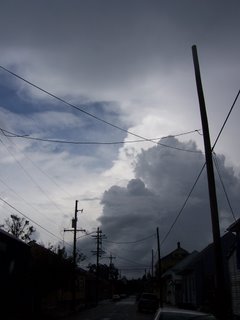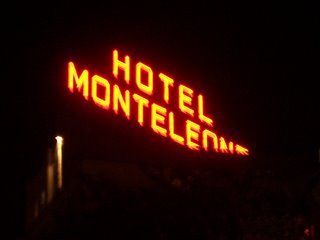
On my second day in New Orleans, I decided to wander through the French Quarter with my boyfriend Ryan. After walking through a majority of it, the August heat and narrow alleys forced us to search for a shaded haven to rest. After seeing a Starbuck’s just beyond the Quarter, we headed for its shaded patio where I waited while Ryan went inside for coffee.

Sitting a table away was a middle-aged African-American woman, smoking a cigarette and staring out at the parking lot, seemingly deep in thought.
“Nice day,” she said without looking towards me.
I nodded in agreement, too tired to actually respond.
She continued to ask me if I was from here, and I politely said no. I told her I was from Kentucky and just here temporarily.
“I been here thirty years,” she said as she exhaled cigarette smoke. I could tell she wanted more from me than a one word response.
“Wow…that’s a really long time.”
“Mmmhmm,” she agreed. “You all ever have floods in Kentucky?” I quickly realized where the conversation was headed and wasn’t sure if I was prepared.
I explained to her that certain areas of Louisville had experienced moderate flooding a few times in its history because of its location on a river.
“Anything like down here?” she asked concerned.
I quickly responded, “Oh no, nothing like that at all.”
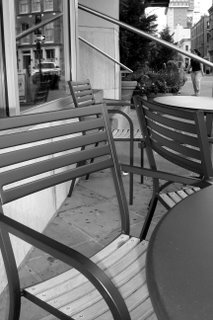
She looked back out towards the parking lot; inhaling her cigarette before continuing, “Some people won’t ever come back and it’s such a shame,” as she nodded her head.
I didn’t know whether to offer solace or no response. After all, I had never had a one-on-one conversation with anyone fresh out of a natural disaster. I simply nodded my head in agreement.
“This here a party town. They party all the time. Too much if you ask me,” she said.
“So I’ve heard,” I replied. Her statement intrigued me, as it seemed to implicate the excessive partying or a lack of care for the city’s well-being as cause for the flooding.
As Ryan emerged from Starbuck’s, coffee in tow, I reluctantly rose to my feet. In the middle of our conversation, my exhaustion had given way to intense interest: Where had she gone during the hurricane? Was her house damaged? So many questions I had left unasked and would never know the answers – even her name.

“Have a nice day, honey,” the lady said warmly as she put out her cigarette.
I grinned at her and said, “thanks, you too.” As we walked off I glanced back at her and realized that I may never know her name, but I would never forget her.

A few weeks later, my roommate Dara and I headed for the French Quarter to meet her co-worker, Bobbi, for some shopping. We met up at her apartment on the outskirts of the Quarter and headed towards the boutiques.

As we walked down the street, Bobbi slowed her pace and peaked in at a yard through an iron gate that had been left ajar. We asked her what she was doing, and she explained that her aunt and uncle lived there and she hadn’t seen them since her arrival in New Orleans.
“I just want to go in and say hello for a minute,” she explained. “They just got back from France a few weeks ago.”
We reluctantly followed Bobbi through the gate, hesitant to detour from our shopping mission.
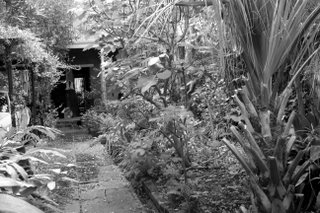
We made our way through the gate and the gorgeous front yard canopied by tall, lofty trees instantly lifted my mood. The house was obviously an older home, but it had been vigorously renovated and updated with landscaping that was nothing short of amazing.
An old, short bald man greeted us around the side.
Bobbi said excitedly, “Hey Uncle John, it’s Bobbi! How are you?”
The old man looked surprised at first, almost as if he couldn’t believe his eyes. Bobbi introduced Dara and me. With a deep and raspy voice, he introduced himself and treated us as if we had been friends for years. John showed us to the front door and told us to make ourselves comfortable.
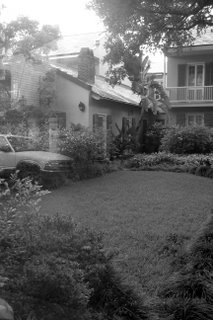
A warm and familiar smell overcame me when we stepped inside: a combination of cigarette smoke and aged wood that reminded me of my grandparent’s house. I immediately felt at home.
“Hey Aunt Dell!” Bobbi exclaimed as she greeted her aunt in the living room. Dara and I walked into the room and were met with southern hospitality. Bobbi’s aunt had the kind of Louisiana accent one could get lost in and a warm aura that made you secretly wish she was your grandmother. She was a beautiful older woman – her gray hair neatly pinned back in a bun and her prominent cheek bones glowing.
After Bobbi and Dell became reacquainted, Dara and I played with their dog and explored the first floor of the house. From their conversation we gathered that John and Dell had two homes: one in Paris where they lived during the summer and this gorgeous home for the rest of the year. I knew this was a side of New Orleans not many people get to see.
John emerged from working outside. “John, show the girls around the house…let them see everything you’ve done,” Dell insisted.
“Yeah Uncle John, they would love to see it,” Bobbi added.
“Okay,” John replied as he lit a cigarette and led us to the kitchen. He explained that the house was originally built in the early 1800s – a fact I found intriguing. For some reason historical architecture had always interested me.

“The original part that we’re in right now was a three-room slave quarters,” John explained. I began thinking of what it must have been like to be a slave, living in a three-room house with many others. “The house next door is also mine and was the original owner’s home. I rent it out now.”
My mind raced with images of a small plantation and its slaves who returned home at night to one of the very rooms in which we were standing. “How fascinating,” I thought to myself and as my eyes explored every architectural detail. This house had experienced so much social change and its function had transformed so much throughout the history of New Orleans.
John continued to explain that these houses were two of only a few original homes left in the Quarter since the turn of the 19th century.
Obviously passionate about architecture, John showed us the additions he had made to the house. They really did blend well with the original house; so well in fact, you could hardly tell any difference between the two.
We followed John up the stairs where he showed us all the bedrooms, bath, and a Spanish style balcony that overlooked the beautiful courtyard we had seen upon entering the property.
After the tour was over, John asked, “Do you all know the famous pirate Jean Lafitte?”

Dara and I nodded our heads with anticipation.
John explained that after Lafitte had been exiled from New Orleans at the end of the 18th century, he moved to Galveston, Texas to resume his piracy. It was at this time that his two daughters purchased and lived in this very house.
We were both stunned. Not only had Creole slaves lived in the home, but the children of the famous pirate John Lafitte as well. Part of me wished I had brought my camera along to capture the moment, but part of me knew this was more than a touristy picture: it was an authentic New Orleans experience.
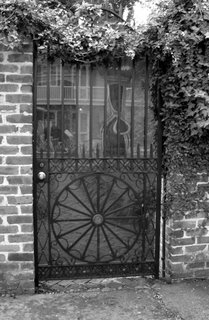
After Bobbi and Dell said their goodbyes, John escorted us out to the front gate. I couldn’t help but wonder if this was the same entrance that Lafitte’s daughters and the plantation residents had used back then?
John lit another cigarette as we said our goodbyes.
I knew I would never see the old lady or John and Dell ever again. Our paths crossed each other only for a fleeting moment in time, not meant to be recorded with a photograph or souvenir. They exist only in my memory, where they will be revisited over and over again.
-Allison Shaw


